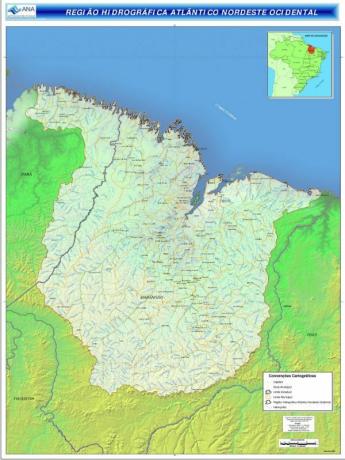Tropical forests are biomes with the greatest productivity and variety of species on the planet.
They are also called tropical rainforest or humid forest because of the high rainfall in the regions where they are located.
They receive this name because they are located between the tropics of Cancer and Capricorn.
Main features

The main characteristics of tropical forests are: the presence of tall trees, a warm climate and high rainfall. The average temperature reaches 20 ºC and it rains around 1,200 millimeters annually.
Despite supporting a huge variety of plants, rainforest soils are poor. Its productivity is guaranteed by the great availability of water and high temperature. In addition, the necessary nutrients are mostly found in the biomass of the living trees themselves than on the ground.
The decomposition process of organic matter is extremely fast in tropical forests and this is what guarantees the cycling of nutrients. This condition is essential to keep this complex functioning. ecosystem.
Location
Tropical rainforests are found in Africa, Asia and Central and South America. They occur mainly in four regions, which are called biogeographic domains, namely:
- Afrotropical: located on the African continent, Madagascar and scattered islands;
- Australia: located in Australia, New Guinea and the Pacific Islands;
- Indomalasia: located in India, Sri Lanka, the Asian continent and Southeast Asia;
- Neotropical: located in South America, Central America and the Caribbean islands.
The largest tropical forest regions are concentrated in South America with the Amazon and in the African and Southeast Asia regions.
The largest rainforest in the world is the Amazon rainforest. This biome is home to a huge diversity of life forms and the greatest availability of fresh water in the world.
Flora
The flora of the rainforest is rich and abundant, with evergreen and evergreen leaves. The vegetation cover is dense and forms a veritable green carpet.
At some points it is possible to find up to 300 tree species in 0.1 hectare of forest.
It is common to find lianas and epiphytic plants. Lianas are woody vines that take root in the ground, while epiphytes grow under other plants where they develop their roots.
At carnivorous plants are very common in tropical forests, especially due to their humid climate.
Fauna
Among the animal species of tropical forests, the variety of insects and other invertebrates stands out.
Some typical tropical forest animals are:
- Golden Lion tamarin;
- Jaguar;
- Capybara;
- otter;
- manatee;
- Macaws;
- Toucans.
Composition
Tropical forests are divided into distinct strata that vary from forest to forest. Are they:

- Sky: The layer called "sky" encompasses the widely spaced tree crowns and their branches. In this stratum are found the emergent trees with more than 40 m in height and that surpass the forest canopy.
- Canopy: Also called "canopy", it is formed by trees with short spacing and high density.
- Understory: Shrubs are characteristic of the "shrub layer", with smaller trees, 5 to 20 meters above the ground.
- Herbaceous: The "soil layer" contains smaller vegetation, as well as fallen trunks and fungi. It is characteristic for being a dark and humid place, where the process of decomposition of organic matter takes place.
Read too: What is a biome?
Logging
The biggest threat to the conservation of tropical forests is the logging. It results in forest fragmentation, loss of biodiversity, erosion and species extinction.
The pace of deforestation in tropical forests is accelerated. To get an idea, it is believed that if current deforestation rates are maintained, in 100 years only isolated fragments of forests will remain.
Today, deforestation is responsible for 1/5 of all gas emissions into the atmosphere. The emission of gases is the main cause of greenhouse effect, which generates the Earth's warming.
Immediately, the impact of deforestation reduces the availability of gas exchange and regulation of the rainfall cycle that are promoted by tropical forests, which can affect the Earth's climate.
To learn more, read also:
- temperate forest
- equatorial forest
- Brazilian ecosystems
- Amazon Animals



